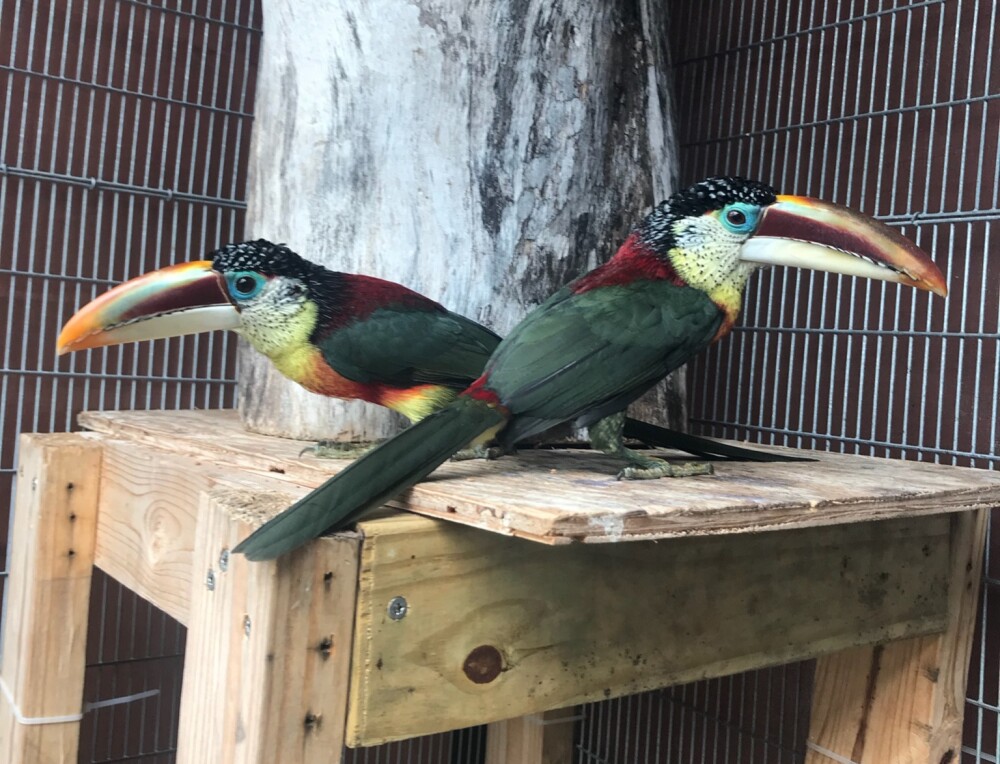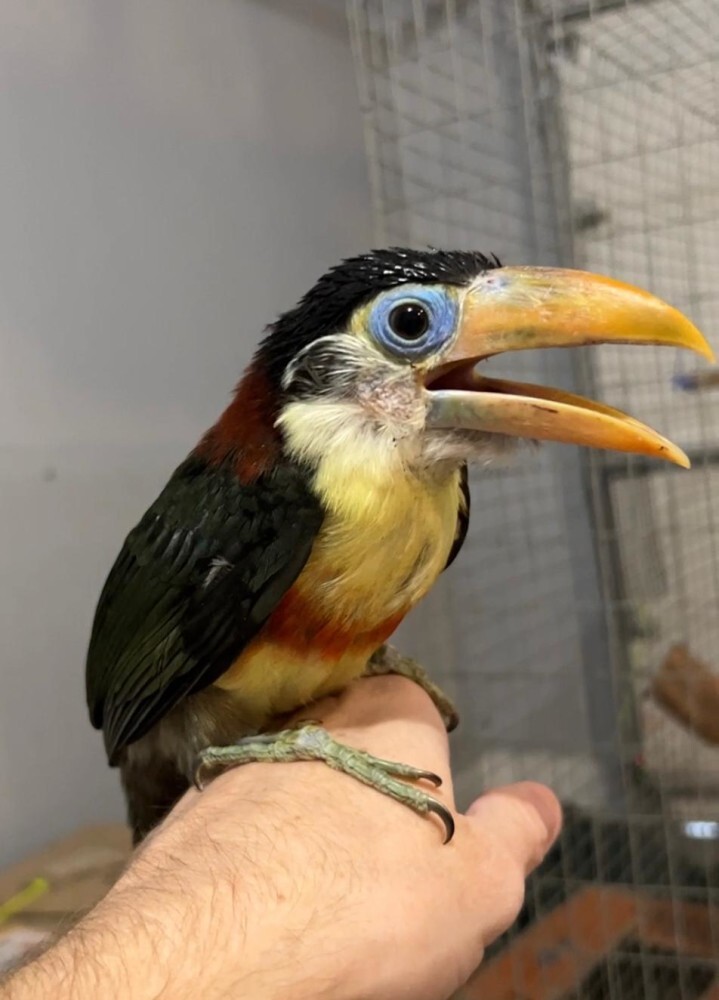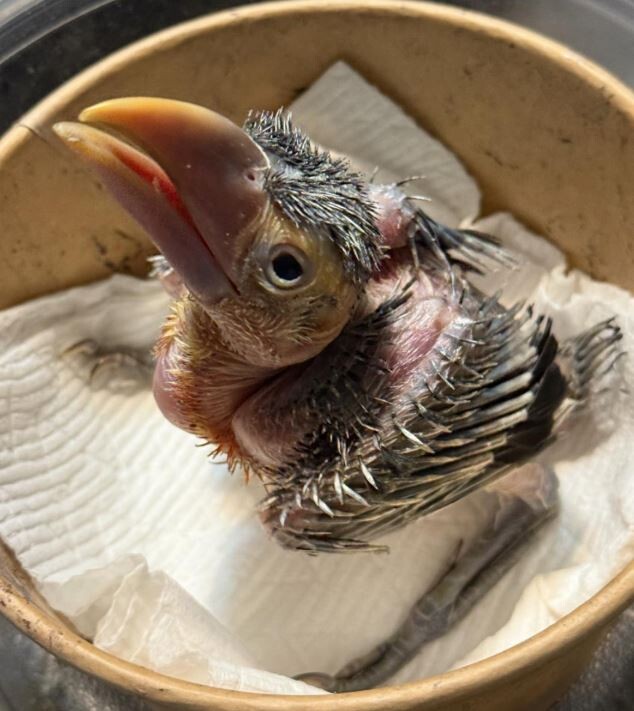Curl Crested Aracari for Sale
(Pteroglossus beauharnaesii)
The Curl-crested Aracari (or “Curls”, as referred to by the Toucan world of enthusiasts) are a vibrant colored, glossy-coated bird with curled feathers on its crown, hence its name. It is one of three Toucan species with red feathers on its nape and shoulders and is the most colorful of the small Toucan species. It's also the most cuddly and smart of the family. The Curl-crested Aracari are peaceful birds, which has made them easy to keep and breed in captivity when once, they were only kept in zoos and aquariums.

Curl Crested Aracari ( Pteroglossus beauharnaesii )
- Price: $4,000.00
- Name: Christ Estep
- Posted: 12/01/2025
- Phone: 7606720127
- Email: Email Seller
- Location: California
- Website: http://www.ToucanJungle.com
2025 breeding season hand fed babies $4000.00 each 2024 breeding season "PAIR" $10K many tricks to successfully breeding but one they kick in they produce many babies. Up to 6 clutches a year, Yes, I know insane! I feed adults twice a day 6:0...

Curl Crested Aracari- handfed
- Price: $4,500.00
- Name: Bret
- Posted: 10/27/2025
- Email: Email Seller
- Location: Georgia
Handfed, tame baby Curl Crested Aracari for sale. Last one of the season Also, male handfed Red Billed Toucan available

Curl Crested Aracari babies
- Name: Bret
- Posted: 06/30/2025
- Email: Email Seller
- Location: Georgia
Handfed baby Curl Crested Aracaris- just weaning, very tame
Curl-crested Aracari is the largest in the smaller classification of Aracaris, weighing just under 10 ounces. In the wild, they inhabit rainforests throughout South America.
To further describe its beauty, the Curl-crested Aracari has bare skin that is blue around its eyes. The feathers on his face have hardened black tips. Its belly plumage is yellowish with a single red band on its breast and an elaborate pattern on its beak. Its tail is long and varies in colors of dark green, red, yellow, brown, and black. One could describe its features on and on. The female birds have smaller beaks and bodies than their male counterpart.
Curl Crested Aracari In the Wild
Curl-crested Aracaris make their nests in abandoned hollows of trees (usually left from woodpeckers). Once its found a suitable place to lay its eggs, it lays three or four and incubates them for just over two weeks time. Chicks are born blind and hairless, but after a month and a half or so, the chicks will gain some plumage and learn to fly with the guidance of their parent birds. If the bird is not nesting with its partner, Curl-crested Aracaris will roost in groups of five or more birds.
Diet
The Curl-crested's long bill allows it to reach and feed on many kinds of fruits native to the Amazon (such as figs). The serrated bill is the perfect tool for the job. Few other species of bird in their habitat can yield the amount of fruit a Toucan can in one season. This is what makes the Aracari an important species for dispersing seeds and keeping the ecological balance of the rainforest. Ficus and other fruiting trees are dependent on the Toucan's efficiency to spread their seeds and produce.
Curl-crested Aracari In Captivity
Because of its peaceful nature, the Curl-crested Aracari can be kept with other small birds in an aviary. When they are raised being hand-fed they even form close bonds with their captors and become one of the family. They are not only peaceful and cooperative but very smart. Curl-crested Aracari are capable of being potty trained and performing tricks! To some keepers' disappointment, the bird cannot mimic or talk the way other parrot species can. They are fairly quiet and only make loud calls when agitated or excited. Some may find this is a blessing.
Curl-crested Aracari need space to fly freely and play with their toys. They are highly active birds and eat a diet consisting of fruit they'd naturally find in the wild. Like many bird species, you may avoid citric acid because of its ability to aid the absorption of iron which can be bad for birds kept as pets. A low-iron protein source should be provided to them.
Curl-crested Aracari enthusiasts, Jeff and Ken, house 5 Curl-crested Toucans and consider them part of the family. They and their 5 Toucans live in Northern California. Rocky lives in Jeff's home office and flies freely around their home. He is treated almost like a pet. Oskar and Shirley are tame because of being hand-raised, but live outside in an aviary connected to the house and have access to Jeff's home office through the window. The others are breeding pairs and are not tame. They live in a large aviary off-site that more resembles their home in the wild.
Curl-crested Aracaris average 16-18 year lifespans.
Rarity
Curl-crested Aracari are threatened by the outlaws who cage and trade them as pets or poach them for meat and medicine. However, the biggest threat to this species is the same of most birds today; habitat loss. One of the largest contributions to the habitat destruction of the Aracari is the mining of bauxite, a mineral that is used for the production of aluminum products. One way to fight off this threat and aid our friendly Curl-crested Aracaris is to lessen the demand for aluminum products. For years, the Curl-crested Aracari has managed to maintain its population enough to be listed as “Least Concern”.

Comments